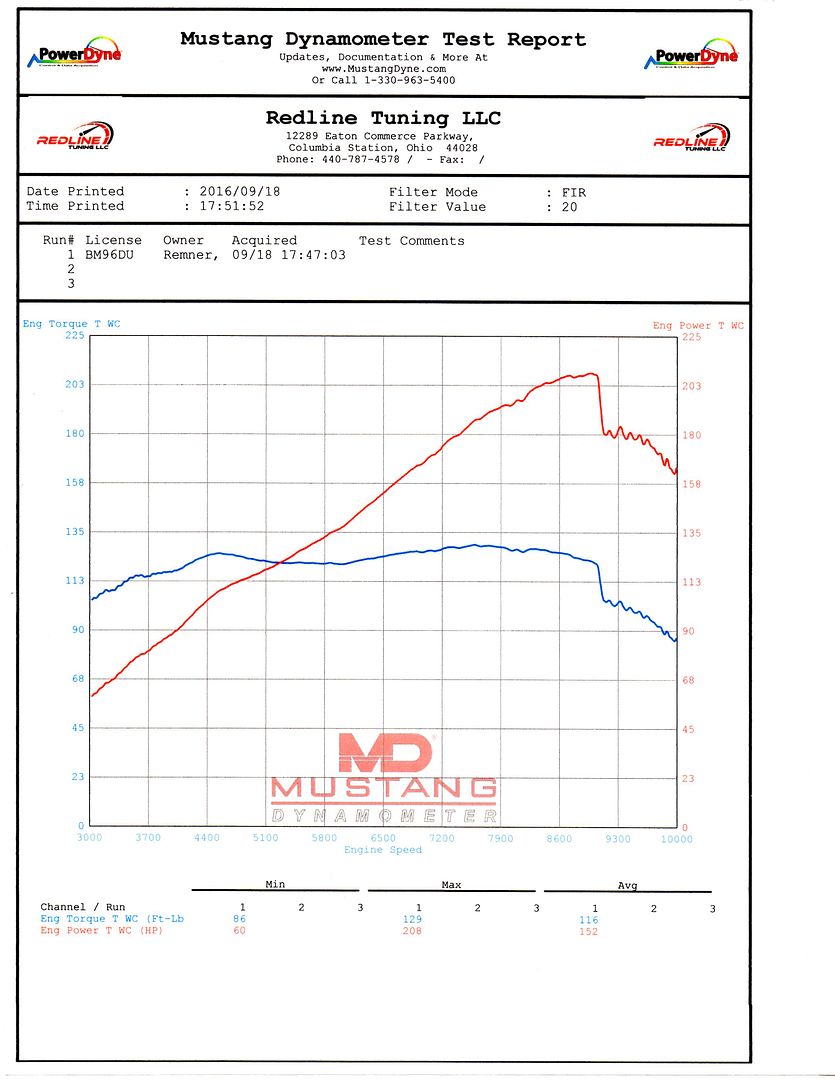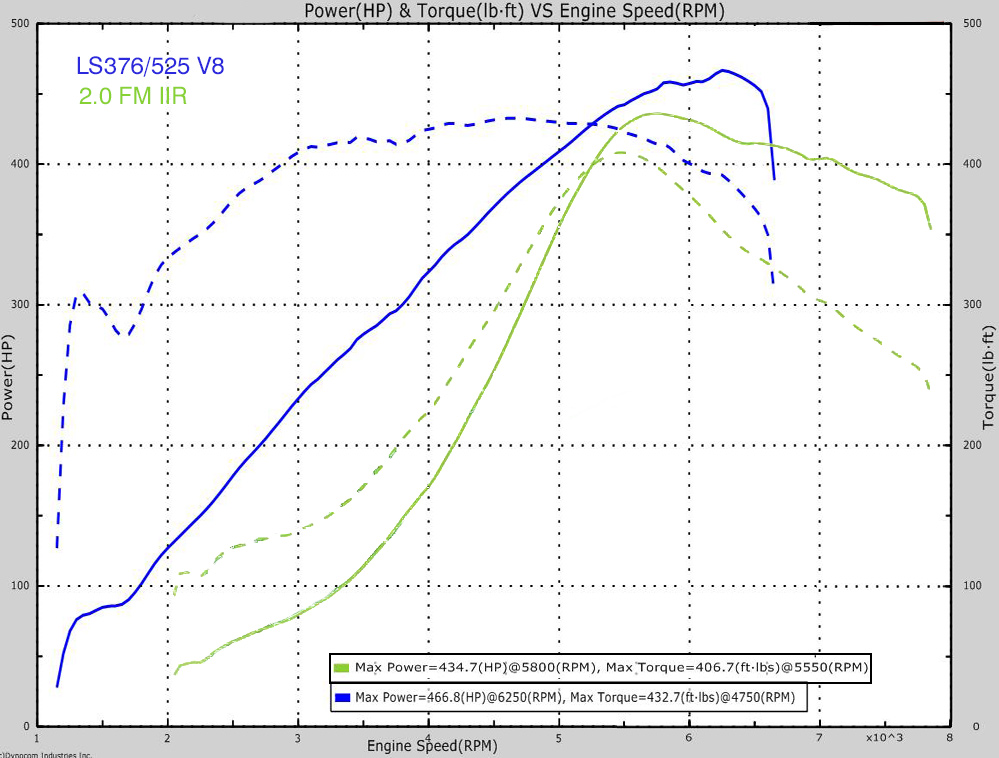Two engines, similar WHP. Similar power curves, actually.

Versus
(top power/torque curves)
Those curves don't look similar at all. One's a highly modified N/A engine or a centrifugal supercharger, the other is either a big engine or positive displacement supercharged. yes?
9000 rpm = more broken parts than 7000rpm, unless be are comparing a B16 Honda and a 502 Chevrolet.
I don't enjoy broken parts.
What are you planning on doing with it?
I'm with Keith, those 2 curves don't look anything alike. I'm guessing displacement vs revs.
Top curve looks a lot like a Honda engine... is the bottom curve a 2.5L NC Miata swap? Am I close?
Oh, and to answer the question: torks. I've been down both roads. I like torks, especially if you're not giving up any horsepower to get there.
Keith Tanner wrote: Those curves don't look similar at all. One's a highly modified N/A engine or a centrifugal supercharger, the other is either a big engine or positive displacement supercharged. yes?
One's a 208whp rotary and the other is a 200whp 2.5l MZR.
I'm seeing a mostly flat torque curve across about 70% of the rev range. The 2.5 has more torque, but since it only revs to 7400 instead of 10,500 it would need 25% taller gearing, so the torque benefit is canceled out. (Horsepower is horsepower)
ProDarwin wrote: Did something break at 9000 rpm?
At 9000 I have the computer add something like 20-25% more fuel so the flywheel and clutch don't come up and say "hi" when it gets slippery. You do not put a rev limiter on a rotary unless you enjoy broken stationary gears.
More info: It would cost me about $3000 to get to point B factoring in the engine, computer, trans, and re-gearing the rearend. But it would be far more emissions friendly (even without a cat, and I'd probably hang a cat on it anyway) and probably easier to quiet down. Fuel economy would probably be a wash.
It really depends on the application but all else being equal I'd happily give up about 5% in peak HP to gain about 40% in peak torque if the torque curves are both relatively flat. Of course, all else is rarely equal and it's hard to beat a rotary for power density.
patgizz wrote: Whichever chassis is easier to LS swap
My life goals involve driving home and not blowing engines up ![]()
I have seen waaaay too many people blow up their LS-swapped RX-7s, or Corvettes or CTS-Vs, at track days, to ever want one of those things in a car that I expect to drive home. Besides, I think they drive like poo, very "numb" power that isn't very modulable. Now if you could maybe make the engine make 300hp but no more than 175-200ft-lb of torque... probably a way to do it in torque management, actually. But then that crank weighs like 45 pounds, need to cut half that weight out so there isn't so much engine inertia.
I think that probably makes the decision for me. There are things you can do to make the Duratec engine's timing chain setup more reliable but in the end, you have a lot of parts in there that are going to want out, and the prospect of holing the block three-six hours from home is a dealbreaker.
Knurled wrote:Keith Tanner wrote: Those curves don't look similar at all. One's a highly modified N/A engine or a centrifugal supercharger, the other is either a big engine or positive displacement supercharged. yes?One's a 208whp rotary and the other is a 200whp 2.5l MZR. I'm seeing a mostly flat torque curve across about 70% of the rev range. The 2.5 has more torque, but since it only revs to 7400 instead of 10,500 it would need 25% taller gearing, so the torque benefit is canceled out. (Horsepower is horsepower)
Yeah, once you re-gear the car so that it's got the same redline with the MZR, there's not going to be much difference. That's why the power curve is on there.
Personally, I like turbo motors with a big healthy slug of torque in the midrange. Something like this:

I kinda like this shape ![]()

I should have figured this was a test to see if we were cool enough to pick the rotary ![]()
I disagree that the LS engines are numb and difficult to modulate, I have no difficulty dealing with the above torque in a 2400 lb car and 225 series tires. They do always sound understressed instead of ready to explode, but that's just aural. Put a good cam in it and the throttle response is nice and sharp. You also have to take care of the oiling (a problem with a bunch of stock applications), but every engine needs some attention to be 100% track reliable when it's outside the normal scope.
But they aren't weird enough to be cool ![]()
I can't get to image hosting, because work.
I just excel-mathed both of those curves. I changed the gearing so they have equivalent top speeds in the 2nd gear. I then graphed acceleration.
The MZR powered car will out-accelerate the Rotary car by a significant margin across the entire gear, except for about a 10mph span where the rotary offers a tiny advantage. In the meat of the curve, the MZR advantage is substantial (>10% accel).
edit: google photos working temporarily...
You'll need to log in to post.